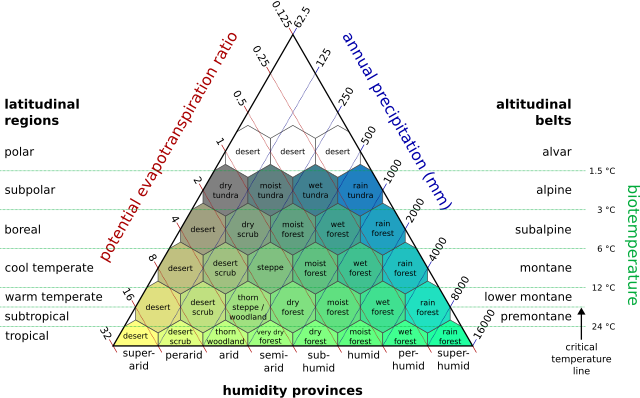Polar desert

Polar desertsare the regions of Earth that fall under anice cap climate(EFunder theKöppenclassification). Despite rainfall totals low enough to normally classify as adesert,polar deserts are distinguished fromtrue deserts(BWhorBWkunder theKöppenclassification) by low annual temperatures andevapotranspiration.Most polar deserts are covered inice sheets,ice fields,orice caps,and they are also calledwhite deserts.[1]
Polar deserts are one of two polarbiomes,the other being Arctictundra.These biomes are located at the poles of Earth, covering much of theAntarcticin the southern hemisphere, and in the northern hemisphere extending from theArcticintoNorth America,EuropeandAsia.Unlike the tundra that can support plant and animal life in the summer, polar deserts are largely barren environments, comprising permanent, flat layers of ice;[2]due to the scarcity of liquid water, the same is also true of the few ice-free areas. However, there is evidence of some life in this seemingly inhospitable landscape: sediments of organic and inorganic substances in the thick ice hosting microbial organisms closely related tocyanobacteria,able to fix carbon dioxide from the melting water.[3]
Temperature changes in polar deserts frequently cross the freezing point of water. This "freeze-thaw" alternation forms patterned textures on the ground, as much as 5 m (16 ft) in diameter.
Most of the interior of Antarctica is polar desert, despite the thick ice cover. Conversely, theMcMurdo Dry ValleysofAntarctica,although they have had no ice for thousands of years due tokatabatic windbut contain ephemeral streams andhypersaline lakescharacteristic of extreme non-polar deserts, are not necessarily polar desert.[citation needed]
Polar deserts are relatively common duringice ages,as ice ages tend to be dry.[citation needed]
Climate scientists have voiced concerns about the effects ofglobal warmingto the ice poles in these polar biomes.[citation needed]

See also[edit]
References[edit]
- ^"Polar Deserts".Sand-boarding.3 January 2022.Retrieved11 August2022.
- ^Woodford, Chris(2011).Arctic Tundra and Polar Deserts.Chicago, Illinois: Heinemann-Raintree Books. pp.6–7.ISBN978-1-432-94172-7.
- ^Priscu, John C.; et al. (1998). "Perennial Antarctic lake ice: an oasis for life in a polar desert".Science.280(5372): 2095–2098.Bibcode:1998Sci...280.2095P.doi:10.1126/science.280.5372.2095.JSTOR2896532.PMID9641910.
![]() This article incorporatespublic domain materialfromTypes of Deserts.United States Geological Survey.
This article incorporatespublic domain materialfromTypes of Deserts.United States Geological Survey.
